#Scientific & Technological Development
Explore tagged Tumblr posts
Text
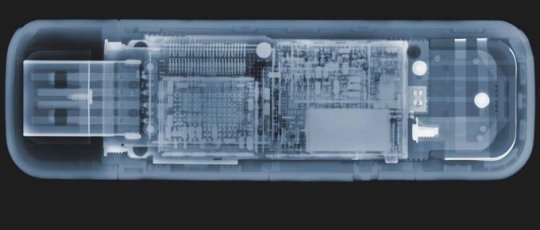
Does a USB drive get heavier as you store more files on it?
Nope. Paradoxically (and theoretically), the more you save on a flash drive, the lighter it gets.
USB drives use Flash memory, which means the the ones and zeros of the data are stored on transistors.
When you save data, a binary zero is set by charging the float gate of the transistor, and a binary one is set by removing the charge.
To charge it, we add electrons, and the mass of each electron is 0.00000000000000000000000000091 grams.
This means that an empty USB drive (which mostly holds zeros) weighs more than a full USB drive (which has ones and zeros). Add data, reduce the weight.
#usb charger#usb port#usb cable#usb#technews#minimal techno#technoblade#technology#tech magic#tech memes#science and technology#science acumen#scientific illustration#scifi#science#the glass scientists#mad scientist#computer science#computer accessories#mobile application development#mobile app development
1K notes
·
View notes
Text

Ukrainian Institute of Scientific and Technological Research and Development, Kiev, Ukraine, 1971.
Architects: Lev Novikov, Florian Turiev
Photography: Johansen Krause
#architecture#modernism#Lev Novikov#Florian Turiev#Ukrainian Institute of Scientific and Technological Research and Development#Johansen Krause#Kiev#Ukraine#USSR#1971
282 notes
·
View notes
Note
How does Magic work? Other than the elements, how does using magic work? Are there specific requirements, or is it more a force of will? Can humans learn to use magic at all?
I've talked about how magic functions in Aethelwld previously here, here, here, and here. In short: Magic is a kind of energy. The pure form is known as "Arcana", but this is unstable and has a strong tendency to stabilise out into various elements: Fire, Water, etc. Magic produces perfection - an element is the perfect form of that thing. Complete perfection is otherwise impossible in the imperfect mundane world, and so magic and magical things often do not obey usual mundane laws.
Most flora and fauna can utilise magical energy in some way - it is a resource in the environment and they evolved various biological structures to accommodate for it.
Almost all humans can use magic in various forms. This is usually an unconscious action (like how you do not control your digestion). A person may be particularly good at gardening, or their bread always turns out correctly, or they can find lost items... All the result of unconscious use of magic. Most humans can also consciously do small magics. I wouldn't call it via force of will, unless you'd also consider "moving your arm" as an act of willpower. Conjuring flame, lights, or moving small objects magically are common abilities. Rarely, some humans can perform large magics. This does require effort, practice, and education. No human can "embody" an element as dragons can; they are mundane creatures. They cannot produce or store magic within themselves, only use what is in the vicinity.
#Aethelwld lore#humans create artificial means of storing magic since they can't do it biologically as dragons and some other creatures can#this starts off with homonculi - creatures whose only function is to be a kind of biological sack for magic storage#but once the technology to grow crystals capable of storing magic takes off that's what's used going forwards#and is one of the most major scientific breakthroughs for humans#kickstarting rapid technological development
2 notes
·
View notes
Text
The crucial techniques – crystallography, chromatography, radioactive tracers, the ultra-centrifuge – were all being developed.
"Frankenstein's Footsteps: Science, Genetics and Popular Culture" - Jon Turney
#book quote#frankenstein's footsteps#jon turney#scientific technology#scientific developments#crystallography#chromatography#radioactive tracer#centrifuge
2 notes
·
View notes
Text
On a slightly more hopeful note: this means that half the people who were born did make it to adulthood: they grew up! And the people who grew up are the ones that raised us, our parents, our great-great-great-great-great grandparents. They stumbled through life and learned some things along the way, and maybe passed it along to their children — if their children survived, and weren't too stubborn to learn from their (incredibly annoying, I'm sure) parents.
We're not new to being people. We have been people, people who grow old, for a very long time, and history reflects this. In my country, we have houses for old men and women (predecessors to homes for the elderly) dating back as far as the 16th century. Before then? Almshouses for the poor elderly — going back all the way to the 13th century. Some guilds even took care to ensure some kind of retirement for their older members. People haven't just always made it to adulthood, they've become old in the process — and there have always been people who tried to take care of them. Because even by the time humanity reached the 13th century, they weren't new to the concept of growing up or growing old.
We get a lot of stuff about growing up wrong because we're human! Living beings make mistakes, we grow and learn, and every single person has to start from scratch when they're born. We mess up because we, as individual people, are new — and the fact that Adelaide from 1267 AD aged to the ripe old age of 92 in an almshouse and discovered all the secrets about growing up (and growing old) while poor 4-year-old Winifred died of the plague in 1347, was never going to help little Sarah in 2024 make less mistakes. Our worlds barely even compare at this point.
The statistics about child mortality are incredibly sad, but we would've made all the same mistakes regardless of how many people throughout history made it to adulthood. Because guess what? We all have one thing in common: we're people. And people all have to find things out for themselves.
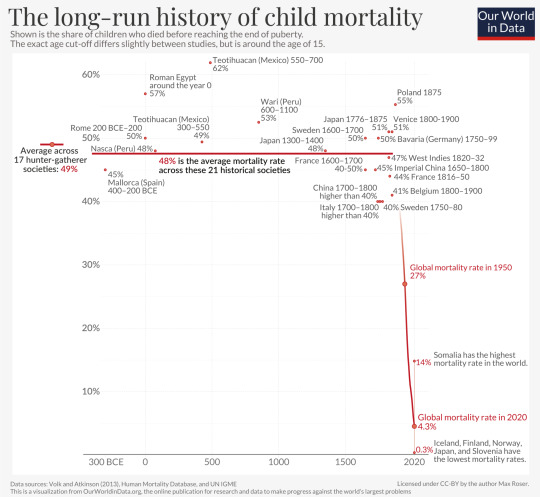
Remember, history was awful. Never trust the romantics.
#the statistics themselves are really really sad#but people have always grown up! none of us would be here if people were new to growing up#and we've always been a bit clumsy at it too. because guess what? life is a challenge! and that's the beauty of it#we *are* very new to a lot of scientific advances though#so yes. a lot of research etc will definitely be new! in ways people in the past couldn't have imagined. & that's so cool!#does it feel like we're even more lost than the generations before us? maybe! because technology has developed incredibly quickly#and we're still adjusting to that as a society#we're not new to being adults. we *are* new to being adults in the 21st century :)#on life#alys.txt
56K notes
·
View notes
Text
ASPI Critical Technology Tracker
Something called the Australian Strategic Policy Institute tracks and forecasts which countries in the world are leading on what it considers the most critical technologies. Their definition of critical seems to be mostly technologies with military applications: “defence, space, energy, the environment, artificial intelligence (AI), biotechnology, robotics, cyber, computing, advanced materials…
0 notes
Text



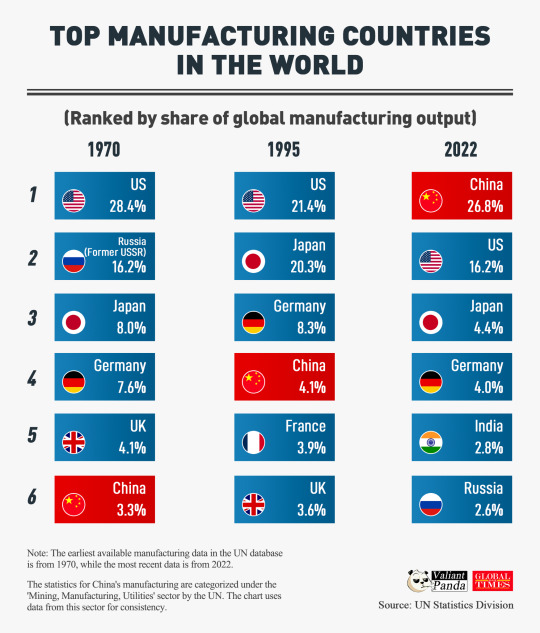



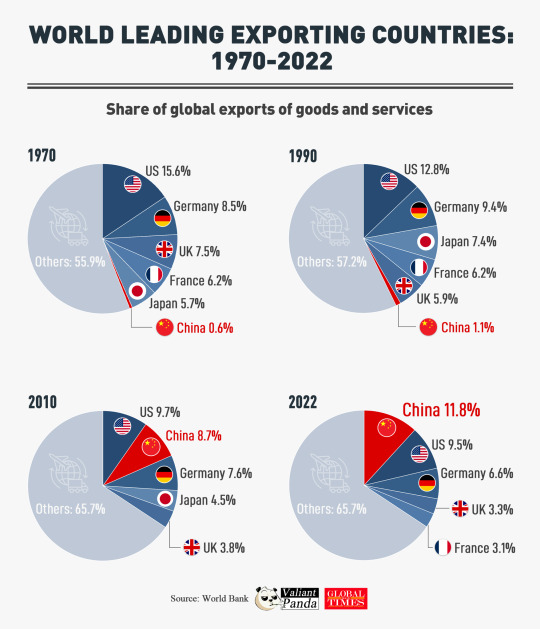

#China 🇨🇳#Scientific & Technological Development#75 Years of Excellence#Hydropower#Producers#Asian Influencers#World’s Leading | Exporters#Patents | Filed#Share | Global | Manufacturing#China 🇨🇳 | Innovation | Powerhouse#China 🇨🇳 | Leading | Artificial Intelligence (AI) | Reseacher#China 🇨🇳 | Highest | Cereals | Producer
0 notes
Video
youtube
9.5 ManufacturingPromote global innovation, R&D growth, and increased fu...
#youtube#Scientific Research Advancement Technological Capability Enhancement Industrial Innovation R&D Investment Developing Country Support Researc
0 notes
Text
NML Hosts Cutting-Edge Mineral Processing Training for SAIL
Executive trainees gain insights into characterization, beneficiation, and agglomeration techniques Innovative corporate training program at CSIR-NML aims to bridge science-industry gap, fostering technological advancements and sustainable practices in mineral processing sector. JAMSHEDPUR – A specialized four-day training program on advanced mineral processing techniques has been launched by the…
#आयोजन#beneficiation techniques#CSIR-NML initiatives#Event#Indian steel industry innovation#industrial technology transfer#industry-academia collaboration#metallurgical advancements#mineral processing training#SAIL executive development#scientific research application#sustainable mineral extraction
1 note
·
View note
Text
Iron metallurgy in Africa

View On WordPress
#African technology#Archaeometallurgical scientific knowledge#IRON AGE#Iron metallurgy#Iron metallurgy in Africa#technological development#West African history
1 note
·
View note
Text

Article | Paywall Free
"The Food and Drug Administration approved new mRNA coronavirus vaccines Thursday [August 22, 2024], clearing the way for shots manufactured by Pfizer-BioNTech and Moderna to start hitting pharmacy shelves and doctor’s offices within a week.
Health officials encourage annual vaccination against the coronavirus, similar to yearly flu shots. Everyone 6 months and older should receive a new vaccine, the Centers for Disease Control and Prevention recommends.
The FDA has yet to approve an updated vaccine from Novavax, which uses a more conventional vaccine development method but has faced financial challenges.
Our scientific understanding of coronavirus vaccines has evolved since they debuted in late 2020. Here’s what to know about the new vaccines.
Why are there new vaccines?
The coronavirus keeps evolving to overcome our immune defenses, and the shield offered by vaccines weakens over time. That’s why federal health officials want people to get an annual updated coronavirus vaccine designed to target the latest variants. They approve them for release in late summer or early fall to coincide with flu shots that Americans are already used to getting.
The underlying vaccine technology and manufacturing process are the same, but components change to account for how the virus morphs. The new vaccines target the KP.2 variant because most recent covid cases are caused by that strain or closely related ones...
Do the vaccines prevent infection?
You probably know by now that vaccinated people can still get covid. But the shots do offer some protection against infection, just not the kind of protection you get from highly effective vaccines for other diseases such as measles.
The 2023-2024 vaccine provided 54 percent increased protection against symptomatic covid infections, according to a CDC study of people who tested for the coronavirus at pharmacies during the first four months after that year’s shot was released...
A nasal vaccine could be better at stopping infections outright by increasing immunity where they take hold, and one is being studied in a trial sponsored by the National Institutes of Health.
If you really want to dodge covid, don’t rely on the vaccine alone and take other precautions such as masking or avoiding crowds...
Do the vaccines help prevent transmission?
You may remember from early coverage of coronavirus vaccines that it was unclear whether shots would reduce transmission. Now, scientists say the answer is yes — even if you’re actively shedding virus.
That’s because the vaccine creates antibodies that reduce the amount of virus entering your cells, limiting how much the virus can replicate and make you even sicker. When vaccination prevents symptoms such as coughing and sneezing, people expel fewer respiratory droplets carrying the virus. When it reduces the viral load in an infected person, people become less contagious.
That’s why Peter Hotez, a physician and co-director of the Texas Children’s Hospital Center for Vaccine Development, said he feels more comfortable in a crowded medical conference, where attendees are probably up to date on their vaccines, than in a crowded airport.
“By having so many vaccinated people, it’s decreasing the number of days you are shedding virus if you get a breakthrough infection, and it decreases the amount of virus you are shedding,” Hotez said.
Do vaccines prevent long covid?
While the threat of acute serious respiratory covid disease has faded, developing the lingering symptoms of “long covid” remains a concern for people who have had even mild cases. The CDC says vaccination is the “best available tool” to reduce the risk of long covid in children and adults. The exact mechanism is unclear, but experts theorize that vaccines help by reducing the severity of illness, which is a major risk factor for long covid.
When is the best time to get a new coronavirus vaccine?
It depends on your circumstances, including risk factors for severe disease, when you were last infected or vaccinated, and plans for the months ahead. It’s best to talk these issues through with a doctor.
If you are at high risk and have not recently been vaccinated or infected, you may want to get a shot as soon as possible while cases remain high. The summer wave has shown signs of peaking, but cases can still be elevated and take weeks to return to low levels. It’s hard to predict when a winter wave will begin....
Where do I find vaccines?
CVS said its expects to start administering them within days, and Walgreens said that it would start scheduling appointments to receive shots after Sept. 6 and that customers can walk in before then.
Availability at doctor’s offices might take longer. Finding shots for infants and toddlers could be more difficult because many pharmacies do not administer them and not every pediatrician’s office will stock them given low demand and limited storage space.
This year’s updated coronavirus vaccines are supposed to have a longer shelf life, which eases the financial pressures of stocking them.
The CDC plans to relaunch its vaccine locator when the new vaccines are widely available, and similar services are offered by Moderna and Pfizer."
-via The Washington Post, August 22, 2024
#covid#long covid#vaccines#vaccination#covid vaccine#covid19#public health#united states#good news#hope
4K notes
·
View notes
Text
Science and Society – Reckoning Revolution
Although scientific revolutions in how we see the world do occur, the bulk of our scientific understanding comes from the cumulative impact of numerous incremental studies that together paint an increasingly coherent picture of how nature works. – Michael E. Mann Society has been working in a certain way for ages which was primarily premised on mythology and theology. Knowledge then was based on…

View On WordPress
#Aristotelian system#Baconian Method#Natural Philosophy#Science#science and society#science and technology#scientific revolution#scientifoc development
0 notes
Text
A lot of people will develop a sentimental attachment to or idealistic obsession with the idea of linear technological progress so strong they start believing every new consumer good hitting the market necessarily represents a historical epoch-making innovation and gradually lose their ability to distinguish scientific literature from advertisements
794 notes
·
View notes
Text
💄🎬Mercury in the Houses🎬💄




❗️All the observations in this post are based on personal experience and research, it's completely fine if it doesn't resonate with everyone❗️
✨️Paid Services ✨️ (Natal charts and tarot readings) Open!
🫧Join my Patreon for exclusive content!🫧
🎬If you like my work you can support me through Ko-fi. Thank you!🎬
💄Masterlist💄

✨️Mercury symbolizes a person's intellect, communication, the exchange of ideas, studies, learning✨️
💄In the 1st house: it gives the person a curious, competitive mind, and a mental and intellectual capacity with a superior gift when it comes to expressing oneself both in writing and speaking. This ability will be ideal for working in the academic and scientific world, or somewhere in which their voices can be heard.
💄In the 2nd house: mental and communication abilities will give the person a gift in financial aspects, business. With this intellectual capacity, they will know how to earn a living through their mental effort. They will be able to see where to achieve success and where not. They will be able to work in areas such as journalism, or writing.
💄In the 3rd house: very powerful since it is their own house of Mercury and they can better develop their qualities. In this house everything related to studies, learning, and intellectual faculties will be very good for them; they tend to have multiple interests and careers.
💄In the 4th house: it gives the person an intellectual environment in their family roots. Mercury in this placement favors professions that have to do with the house (architect for example).
💄In the 5th house: it has to do with creativity, here the intellectual part can favor these natives being writers, intellectuals. They will be attracted to reading, writing, everything that has to do with curiosity, with learning. They will have few children and if they have a relationship with them, they will have very good communication.
💄In the 6th house: a very good position for everything related to work, responsibility, involvement. It also has to do with technology, since it requires observation and is ideal for health problems. Predisposition to change jobs and to move around for work issues.
💄In the 7th house: it favors finding a partner who is either younger or with intellectual and/or restless attitudes. It may be that marriage is sometimes more out of interest than love. This position helps you to know how to move in the social area and to know how to emerge victorious in situations.
💄In the 8th house: it is a perfect position for psychologists and occultists. These natives will be attracted by the ancient, the occult, everything that has to do with research. Favorable position for business, finances.
💄In the 9th house: it favors intellectual growth to give a person oriented to be a scientist or a writer of some kind. Numerous trips abroad will surely, although long and short durations. Philology, literature and innate facility in languages will attract you.
💄In the 10th house: it will make the native ideal for professions such as diplomat or politicians, there is an humanitarian nature to them. Everything that has to do with the business world will be attractive to this native. Their sharp mind will make them reap great professional successes. It may sometimes cause instability.
💄In the 11th house: Mercury will provide this native with intelligent and diplomatic friendships that will be related to communication. They know how to inspire loyalty in their friends. They will be in groups where there is an exchange of ideas. Friendships with family members.
💄In the 12th house: Mercury has a difficult role here. Since they will feel like the black sheep among their environment. They will be a person who will be highly evaluated, judged. They are intelligent but will not know how to express themselves well. Traumas in childhood, adolescence.


#astrology placements#astrology#astrology moodboard#astro blog#astro notes#astro news#astro observations#astro community#zodiac observations#zodiac signs#zodiac#astro seek#mars in cancer#horoscope#paid natal chart reading#natal chart reading#tarot reading#tarot and astrology#kpop astrology#kpop tarot#mercury retrograde#mercury in virgo#mercury in astrology#mercury in scorpio#mercury in leo#mercury in the 12th house#mercury in the houses#mercury in libra#mercury in 1st house#mercury astrology
863 notes
·
View notes
Text
Student Experiments Soar!
youtube
Have you ever wondered what it takes to get a technology ready for space? The NASA TechRise Student Challenge gives middle and high school students a chance to do just that – team up with their classmates to design an original science or technology project and bring that idea to life as a payload on a suborbital vehicle.
Since March 2021, with the help of teachers and technical advisors, students across the country have dreamed up experiments with the potential to impact space exploration and collect data about our planet.
So far, more than 180 TechRise experiments have flown on suborbital vehicles that expose them to the conditions of space. Flight testing is a big step along the path of space technology development and scientific discovery.
The 2023-2024 TechRise Challenge flight tests took place this summer, with 60 student teams selected to fly their experiments on one of two commercial suborbital flight platforms: a high-altitude balloon operated by World View, or the Xodiac rocket-powered lander operated by Astrobotic. Xodiac flew over the company’s Lunar Surface Proving Ground — a test field designed to simulate the Moon’s surface — in Mojave, California, while World View’s high-altitude balloon launched out of Page, Arizona.


Here are four innovative TechRise experiments built by students and tested aboard NASA-supported flights this summer:
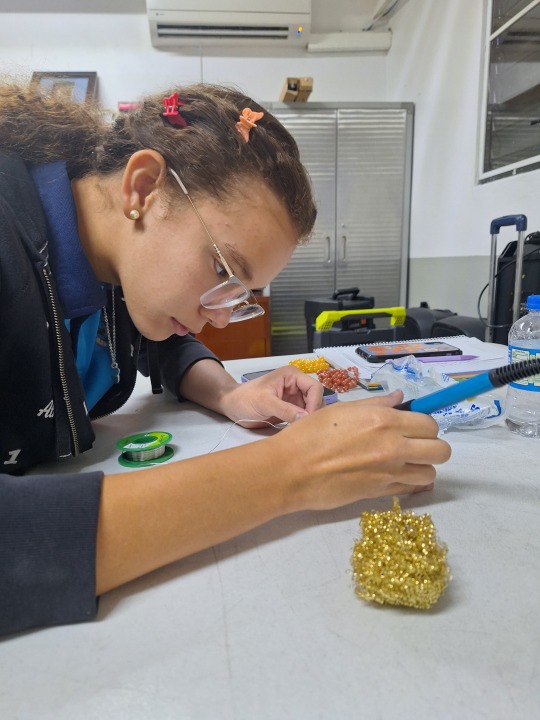
1. Oobleck Reaches the Skies
Oobleck, which gets its name from Dr. Seuss, is a mixture of cornstarch and water that behaves as both a liquid and a solid. Inspired by in-class science experiments, high school students at Colegio Otoqui in Bayomón, Puerto Rico, tested how Oobleck’s properties at 80,000 feet aboard a high-altitude balloon are different from those on Earth’s surface. Using sensors and the organic elements to create Oobleck, students aimed to collect data on the fluid under different conditions to determine if it could be used as a system for impact absorption.
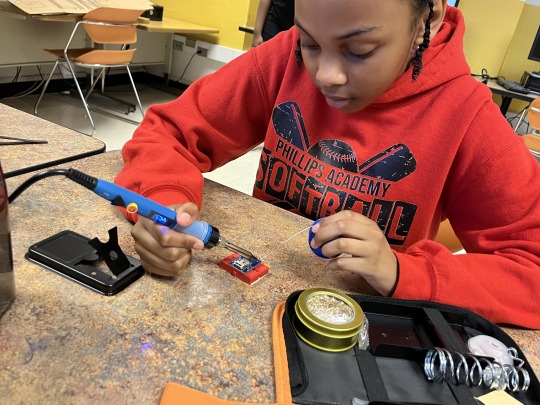
2. Terrestrial Magnetic Field
Middle school students at Phillips Academy International Baccalaureate School in Birmingham, Alabama, tested the Earth’s magnetic field strength during the ascent, float, and descent of the high-altitude balloon. The team hypothesized the magnetic field strength decreases as the distance from Earth’s surface increases.
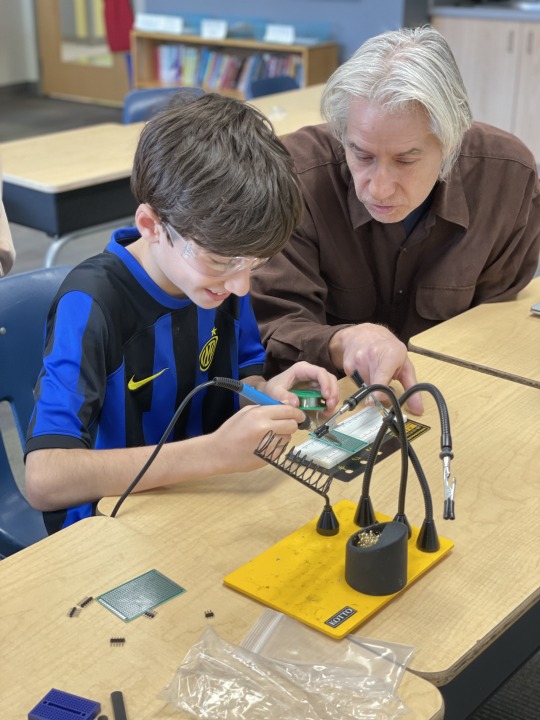
3. Rocket Lander Flame Experiment
To understand the impact of dust, rocks, and other materials kicked up by a rocket plume when landing on the Moon, middle school students at Cliff Valley School in Atlanta, Georgia, tested the vibrations of the Xodiac rocket-powered lander using CO2 and vibration sensors. The team also used infrared (thermal) and visual light cameras to attempt to detect the hazards produced by the rocket plume on the simulated lunar surface, which is important to ensure a safe landing.
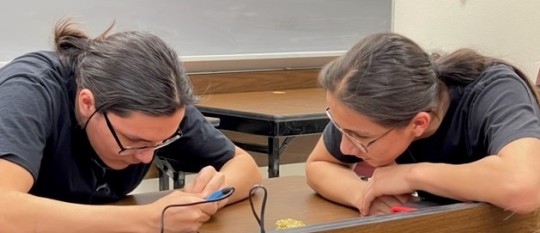
4. Rocket Navigation
Middle and high school students at Tiospaye Topa School in LaPlant, South Dakota, developed an experiment to track motion data with the help of a GPS tracker and magnetic radar. Using data from the rocket-powered lander flight, the team will create a map of the flight path as well as the magnetic field of the terrain. The students plan to use their map to explore developing their own rocket navigation system.
youtube
The 2024-2025 TechRise Challenge is now accepting proposals for technology and science to be tested on a high-altitude balloon! Not only does TechRise offer hands-on experience in a live testing scenario, but it also provides an opportunity to learn about teamwork, project management, and other real-world skills.
“The TechRise Challenge was a truly remarkable journey for our team,” said Roshni Ismail, the team lead and educator at Cliff Valley School. “Watching them transform through the discovery of new skills, problem-solving together while being driven by the chance of flying their creation on a [rocket-powered lander] with NASA has been exhilarating. They challenged themselves to learn through trial and error and worked long hours to overcome every obstacle. We are very grateful for this opportunity.”
Are you ready to bring your experiment design to the launchpad? If you are a sixth to 12th grade student, you can make a team under the guidance of an educator and submit your experiment ideas by November 1. Get ready to create!

Make sure to follow us on Tumblr for your regular dose of space!
607 notes
·
View notes
Text
At the outset of H. G. Wells’s The War of the Worlds (1898), Wells asks his English readers to compare the Martian invasion of Earth with the Europeans’ genocidal invasion of the Tasmanians, thus demanding that the colonizers imagine themselves as the colonized, or the about-to-be-colonized. But in Wells this reversal of perspective entails something more, because the analogy rests on the logic prevalent in contemporary anthropology that the indigenous, primitive other’s present is the colonizer’s own past. Wells’s Martians invading England are like Europeans in Tasmania not just because they are arrogant colonialists invading a technologically inferior civilization, but also because, with their hypertrophied brains and prosthetic machines, they are a version of the human race’s own future.
The confrontation of humans and Martians is thus a kind of anachronism, an incongruous co-habitation of the same moment by people and artifacts from different times. But this anachronism is the mark of anthropological difference, that is, the way late-nineteenth-century anthropology conceptualized the play of identity and difference between the scientific observer and the anthropological subject-both human, but inhabiting different moments in the history of civilization. As George Stocking puts it in his intellectual history of Victorian anthropology, Victorian anthropologists, while expressing shock at the devastating effects of European contact on the Tasmanians, were able to adopt an apologetic tone about it because they understood the Tasmanians as “living representatives of the early Stone Age,” and thus their “extinction was simply a matter of … placing the Tasmanians back into the dead prehistoric world where they belonged” (282-83). The trope of the savage as a remnant of the past unites such authoritative and influential works as Lewis Henry Morgan’s Ancient Society (1877), where the kinship structures of contemporaneous American Indians and Polynesian islanders are read as evidence of “our” past, with Sigmund Freud’s Totem and Taboo (1913), where the sexual practices of “primitive” societies are interpreted as developmental stages leading to the mature sexuality of the West. Johannes Fabian has argued that the repression or denial of the real contemporaneity of so-called savage cultures with that of Western explorers, colonizers, and settlers is one of the pervasive, foundational assumptions of modern anthropology in general. The way colonialism made space into time gave the globe a geography not just of climates and cultures but of stages of human development that could confront and evaluate one another.
The anachronistic structure of anthropological difference is one of the key features that links emergent science fiction to colonialism. The crucial point is the way it sets into motion a vacillation between fantastic desires and critical estrangement that corresponds to the double-edged effects of the exotic. Robert Stafford, in an excellent essay on “Scientific Exploration and Empire” in the Oxford History of the British Empire, writes that, by the last decades of the century, “absorption in overseas wilderness represented a form of time travel” for the British explorer and, more to the point, for the reading public who seized upon the primitive, abundant, unzoned spaces described in the narratives of exploration as a veritable “fiefdom, calling new worlds into being to redress the balance of the old” (313, 315). Thus when Verne, Wells, and others wrote of voyages underground, under the sea, and into the heavens for the readers of the age of imperialism, the otherworldliness of the colonies provided a new kind of legibility and significance to an ancient plot. Colonial commerce and imperial politics often turned the marvelous voyage into a fantasy of appropriation alluding to real objects and real effects that pervaded and transformed life in the homelands. At the same time, the strange destinations of such voyages now also referred to a centuries-old project of cognitive appropriation, a reading of the exotic other that made possible, and perhaps even necessary, a rereading of oneself.
John Rieder, Colonialism and the Emergence of Science Fiction
#words#hg wells#fiction#science fiction#colonialism and the emergence of science fiction#john rieder
481 notes
·
View notes